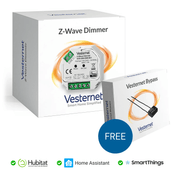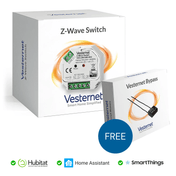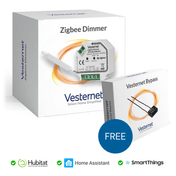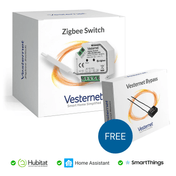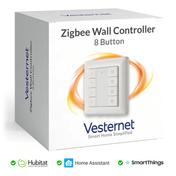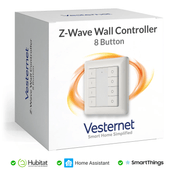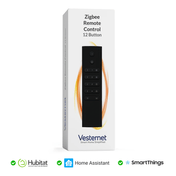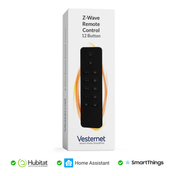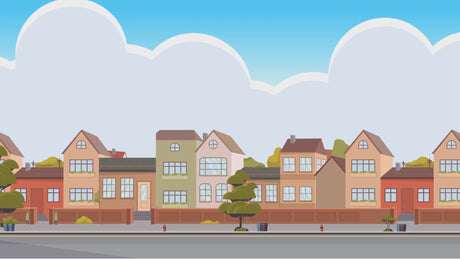Z-Wave, Zigbee & WiFi Sensors are the "eyes and ears" of your Smart Home and can be used to detect motion, door openings, changes in temperature, humidity or even UV levels. This enables you to trigger all manner of things in your Smart Home Controller - from turning lights on, to sounding an alarm, to opening / closing blinds... the list is endless. Sensors enable things to happen automatically - which is one of the main goals of "automating" your home using home automation, turning it from dumb to Smart!
Manufacturers of Z-Wave, Zigbee & WiFi Sensors have different types available designed to do specific roles, this gives you the best product for the job, but can make choosing the right Sensor a little more difficult. You also have the choice between manufacturers to contend with, where some will offer more advanced capabilities and others will offer simpler functionality, often at a cheaper price. Remember that you can mix and match manufacturers on the same system as they are all compatible - more information can be found in our Understanding Compatibility guide.
This guide shows what Sensors can do in common scenarios within your Smart Home and then goes on to explain what different types of Sensor do at a high level, as well as showing some comparison details to help select between the manufacturers.
What Sensors can do in your Smart Home
Here are just a few examples to give you an idea what Sensors can do in various areas of a Smart Home - it's by no means an exhaustive list, its just a few ideas to get you thinking, ultimately anything is possible!
Lighting
Adding Sensors can really bring your Smart Home Lighting system to life. You can use Motion Sensors to turn the lights on when you walk in a room, and they automatically turn off again when you leave. Door / Window Sensors can turn the lights on as you open an entrance door, Light Sensors can control lights at dusk / dawn - ideal for garden and path or driveway illumination, and Smoke Sensors can turn the lights on if an emergency is detected to help people get out of the building.
Further information on ideas for Smart Home Lighting can be found in our Inline Lighting guide and our Plug & Play Lighting guide.
Appliance Control & Power Monitoring
It's amazing how much power is wasted in the average home - parasitic "standby" power consumption from TVs, gaming systems, stereos and even phone / tablet chargers can mount up to be hundreds of Watts! In turn this can add a huge amount to your monthly energy bills.
By using Motion Sensors and Door / Window Sensors your Smart Home Controller can know when your house is empty or people are sleeping and turn off unused appliances to stop them wasting your hard-earned money!
Energy / Utility Sensors also allow you to understand your home's energy usage over time, so that you can make small changes that make a big difference. For example, once you realise that your old washing machine is sucking up thousands of Watts of power and using hundreds of litres of water on every cycle, perhaps upgrading to a new, more efficient model - one that can wash even the largest loads on just a few hundred Watts and a mug full of water - will reap big savings.
Further information on ideas for Smart Home Appliance Control & Power Monitoring can be found in our Appliance Control & Power Monitoring guide.
Heating
Using Temperature Sensors in different rooms allows you to create a zoned Smart Home Heating system which provides heat when and where you need it. They can also play a more passive role in alerting you if the temperature drops to freezing and at the same time turning on the heating to prevent frozen pipes. Motion Sensors can be used to turn on heating only in the rooms that are actually being used, thereby saving you money by not heating empty rooms.
Other Sensors such as Carbon Monoxide (CO) Sensors could turn off the boiler if the it detects dangerous levels of CO which could indicate a faulty boiler - CO is known as the "silent killer" so this is an important function that your Smart Home can provide! Also, a Door / Window Sensor can detect a door or window being opened and turn off the heating in that room to save wasting heat - ideal for bedrooms where children seem to find it easier to open the window when they are hot, rather than adjust the thermostat!
Further information on ideas for Smart Home Heatiing can be found in our Heating guide and our Smoke & CO guide.
Security
Your Smart Home Security System can make use of Sensors all over the house. The obvious ones are Motion Sensors and Door / Window Sensors, that trigger alerts if motion is detected or doors and windows are opened.
Other Sensors can extend the capabilities to protect your home including Water Sensors to protect against leaks, Freeze Sensors to protect against low temperatures presenting a likelihood of freezing pipes, Smoke Sensors to protect against fire and CO Sensors to protect against poisonous gases.
Further information on ideas for Smart Home Security can be found in our Security Monitoring guide and our Water & Freeze guide.
Climate & Comfort
Sensors can play an active role in controlling the climate and comfort levels in your Smart Home. Temperature Sensors can detect if the room is getting too hot due to direct sunlight, so that your Smart Home Controller can close the blinds, shutters or curtains.
Similarly, Humidity Sensors or Air Quality Sensors could allow your Smart Home Controller to know when your rooms are getting stuffy and could open windows, turn on extractor fans or ramp up the Air Conditioning.
Light Sensors can detect dusk and have the Smart Home Cotnroller automatically close the blinds for you (and open them in the morning). Or perhaps you can combine light levels in your rooms with the light level outside and the position of the sun, to provide a Circadian lighting system where you are able to control the colour and intensity of the light at particular times of the day.
Further information on ideas for Smart Home Climate & Comfort can be found in our Climate & Comfort guide.
Sensors Shared
Remember, you can share the same Sensor between all these different tasks because your Smart Home Controller can be configured to do many things based off the same "trigger". So a Motion Sensor in the lounge can control the lights, protect the room when you're away, and monitor if you're in the room to turn the heating on. Creating full Smart Home "automation" will likely end up using fewer Sensors than you may think!
Further information on picking the best Smart Home Controller to suit your requirements can be found in our Choosing A Smart Home Controller guide.
Sensors
We have a huge range of Sensors available so below we have split the range into several broad categories and shown the most popular ones used by our customers and staff. We discuss some ideas for common scenarios that will put eachtype to good use and lay out a comparison table for some of the key features and functions of each Sensor.
Multipurpose, Motion & Light Level / Lux Sensors - Z-Wave | Zigbee | WiFi
Multipurpose Sensors, as the name implies, combine several different Sensors into a single device - saving space and cost. These are the most popularproduct and usually cover Motion, Temperature and Light Level / Lux as a minimum
It rarely makes sense to use a single-purpose Motion, Light Level / Lux or Temperatureas it's more cost effective to buy a single device that does them all - it makes sense to use Multipurpose Sensors whereever you can as they can be installed in all areas of your Smart Home allowing flexibility of use in the future.
That said, sometimes a single-purpose device is the best option, for example if aoffers a specific function or feature like being outdoor rated.
Usage Scenarios:
- Control room lighting based on occupancy.
- Trigger outdoor security lighting when motion is detected.
- Use historic motion data to create a real-life lighting schedule to simulate occupancy when you're on holiday.
- Turn on lights when it's actually dark, not just based on time.
- Turn up the heating when somebody enters the room if the temperature is low.
Door & Window Sensors - Z-Wave | Zigbee | WiFi
Technically known as "Contact" Sensors, these send an alert to your Smart Home Controller when a door or window is opened. They work by having a magnet close to the main Sensor body and when the magnet is moved too far away (for example by the window opening), the Sensor is triggered.
As with multipurpose Sensors, it can sometimes be best to choose a Door & Window Sensor that incorporates several different features into one device for flexibility (for example a Window Sensor with a temperature function can be used to detect when the sun is shining directly through that window).
Usage Scenarios:
- Turn lights on and off automatically when doors are opened and closed.
- Protect your furnishings from harmful UV by closing the curtains as the temperature at the window increases.
- Create a security alert system to monitor your doors and windows when you're away from home.
- Turn off your radiator TRV when somebody opens a window or door.
- Use window temperature to automatically lower the blinds.
Smoke, CO, CO2 & Air Quality Sensors - Z-Wave | Zigbee | WiFi
These Sensors extend your Smart Home capabilities to protect your house from fire, smoke and other poisonous gases such as Carbon Monoxide (also known as the "silent killer").
You really can't have too many of this type of Sensor in your home, we would typically suggest to at least cover common areas where these hazards could occur - for example the kitchen, garage, etc. For ultimate safety consider installing Sensors in every room because the earlier you can get an alert that there's a potential problem, the more chance you have to deal with it before it's become too serious!
Usage Scenarios:
- Flash your lighting when smoke or CO are detected.
- Automatically open windows or turn on air circulation fans when CO2 levels rise.
- Turn off your boiler when CO is detected.
- When Air Quality deteriorates indoors, boost the fresh air input on the HVAC.
- When VOCs are high, send an alert to remind yourself to take allergy medications.
Water & Flood Sensors - Z-Wave | Zigbee | WiFi
Get early warnings of potential flooding, leaks and freezing pipes by allowing your Smart Home Controller to fully protect your whole house - especially important when you're away on holiday, or for hard to see places like behind washing machines or under baths.
Usage Scenarios:
- Get an early warning of potential freezing temperatures in basements and cellars.
- Automatically turn off the incoming water supply when leaks are detected.
- Turn off the dishwasher or washing machine if water is detected underneath them.
- When water is detected turn on a sump pump.
- Monitor your pond by detecting when the water level drops.
Temperature & Humidity Sensors - Z-Wave | Zigbee | WiFi
These devices work well as part of a multi-zoned heating system - by allowing your Smart Home Controller to monitor the temperature of individual rooms and zones you can maximise the efficiency of your radiators.
As we mentioned previously though, consider whether single-purpose Sensors make sense - by utilising a Multipurpose Sensor you can save money as one Sensor provides many features!
Usage Scenarios:
- Use room temperature data to create a multi-zoned heating system.
- Monitor tanks and pipes to ensure your boiler is operating efficiently.
- Detect changes in humidity to automatically control kitchen and bathroom extractor fans.
- Create graphs and reports of monitored temperatures to learn how your home reacts to heat and cold.
- Protect garages, sheds and other outbuildings from frost and damp by controlling storage heaters automatically.
Energy & Utility Sensors - Z-Wave | Zigbee | WiFi
Taking control of your energy usage can be one of the most statisfying uses of your Smart Home technology because you can use the data and information obtained to make real savings to your monthly bills.
Energy & Utility Sensors offer an accurate way to monitor energy but in most cases they'll need to be installed by an electrician as they will need to be connected directly to your electricity supply.
Usage Scenarios:
- Understand where your energy usage is costing you money.
- Automatically turn off appliances when they aren't being used to save standby power.
- Monitor your renewable energy generation.
- Detect potential problems such as leaks by monitoring water and gas meters.
- Control appliances so that they use cheaper off-peak electricity.
Getting Help and Advice
Hopefully this guide has helped clarify how Z-Wave, Zigbee & WiFi Sensors can be used and which are the best for your needs. If you need any further help or advice, contact Vesternet and we will do our best to answer all your questions.










